Impressions of the 62nd Meihinten (Japanese Suiseki Masterpieces)
A discussion of the February 2025 62nd Exhibition of Japanese Suiseki Masterpieces.
By David Nguyendo
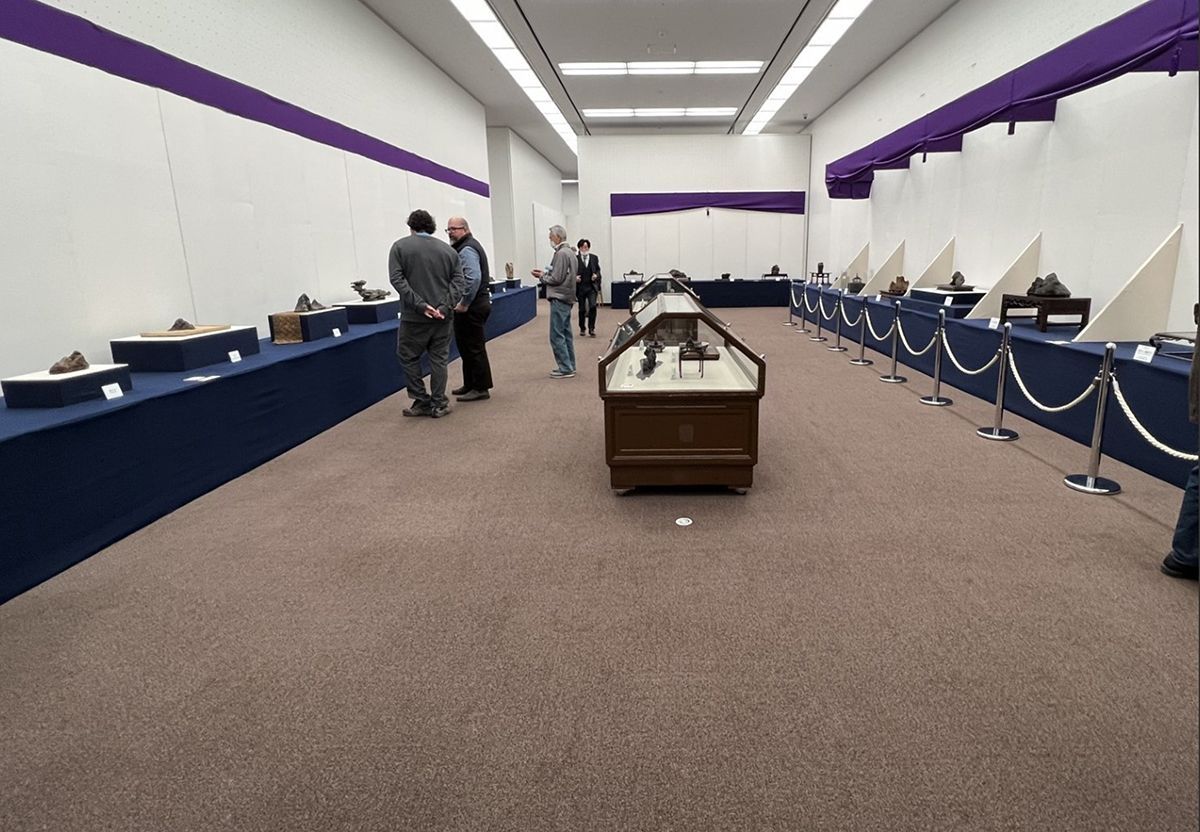
The first exhibit room
For ten years, this suiseki exhibition was held at the Tokyo Metropolitan Art Museum in Tokyo, Japan, and was called The Japan Suiseki Exhibition. Last year the event was renamed to The Exhibition of Japanese Suiseki Masterpieces (Meihinten). Even though the name was changed, the layout display and quality of the stones were the same.
As I entered the exhibition, the first room was reserved for displaying the Special Entries and Special Exhibitions. Two glass case tables used for displaying small stones were located in the center of the room.
This year’s Special Entry was a natural chrysanthemum stone. It was said that this stone at one time was owned by a
daimyo in the mid-Edo period.
Front view of Special Entry chrysanthemum stone, 12.4 in X 4.3 in X 7.3 in
As I looked at the side view of this stone, I saw more large radiating flowers that clearly define a chrysanthemum flower shape. It’s such a pure and elegant stone with white chrysanthemum flowers on top of a dark base stone.
There were fifteen stones on display from the Special Exhibition. All of them were from the Okawa Family Collection which was known to have many historical suiseki. I felt special to have a chance to view these stones from the Okawa family collection personally. Among these stones, two stones caught my attention, the thin upright chrysanthemum flower stone and a Kamuikotan stone.
A chrysanthemum flower figure stone and its metal base.
I also noticed that the stone was fitted on the wooden daiza, and the whole thing was put into the cup of another stand that was made from either metal or cast iron. I think it is a clever idea because by displaying it this way, the owner can adjust the viewing angle of the stone at will.
My second favorite stone from the Okawa family was a kamuikotan stone. This type of stone is known to me as a hard and solid stone. However, I was surprised to see that nature had carved and turned this stone into a delicate figurine-looking kamuikotan stone. I was told that this was a dragon that flew over the sea and I totally agreed and liked it very much. However, at that time, the stone also reminded me of my little short-legged dachshund named “Noodle” at home.
Kamuikotan stone
The second room in the exhibition was used for tokonoma displays. This is one of my favorite ways to display stones. Adding accessories to display together with a stone suggested more imagination to me.
The Tokonoma Display room
I always spend more time at the tokonoma display room. It is a nice feeling whenever I see and understand the owners’ messages through their tokonoma displays. The two far mountain view stones below were my favorite at the show. They have similar views and dimensions, but each stone and its scroll give the viewer a different sense and imagination.
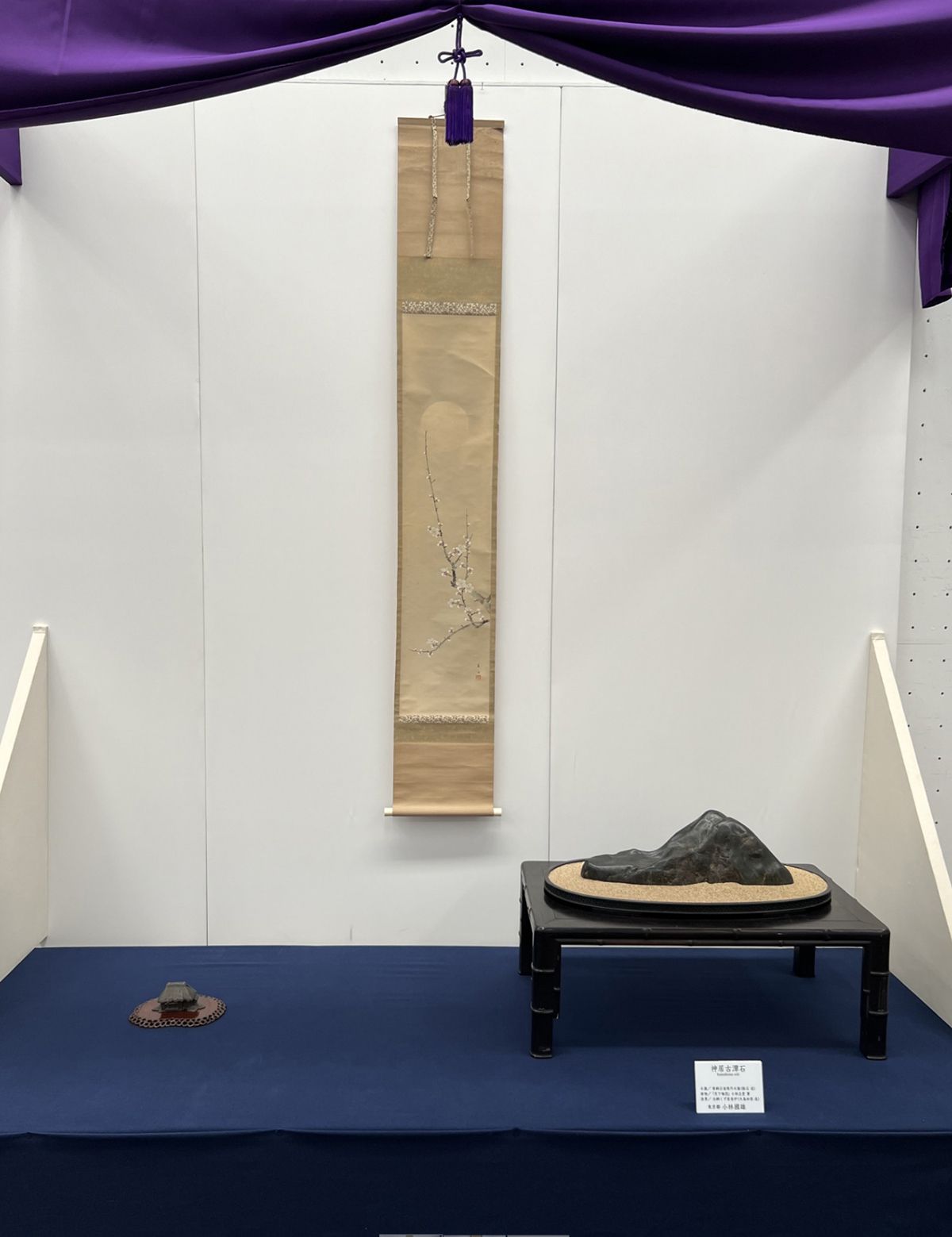
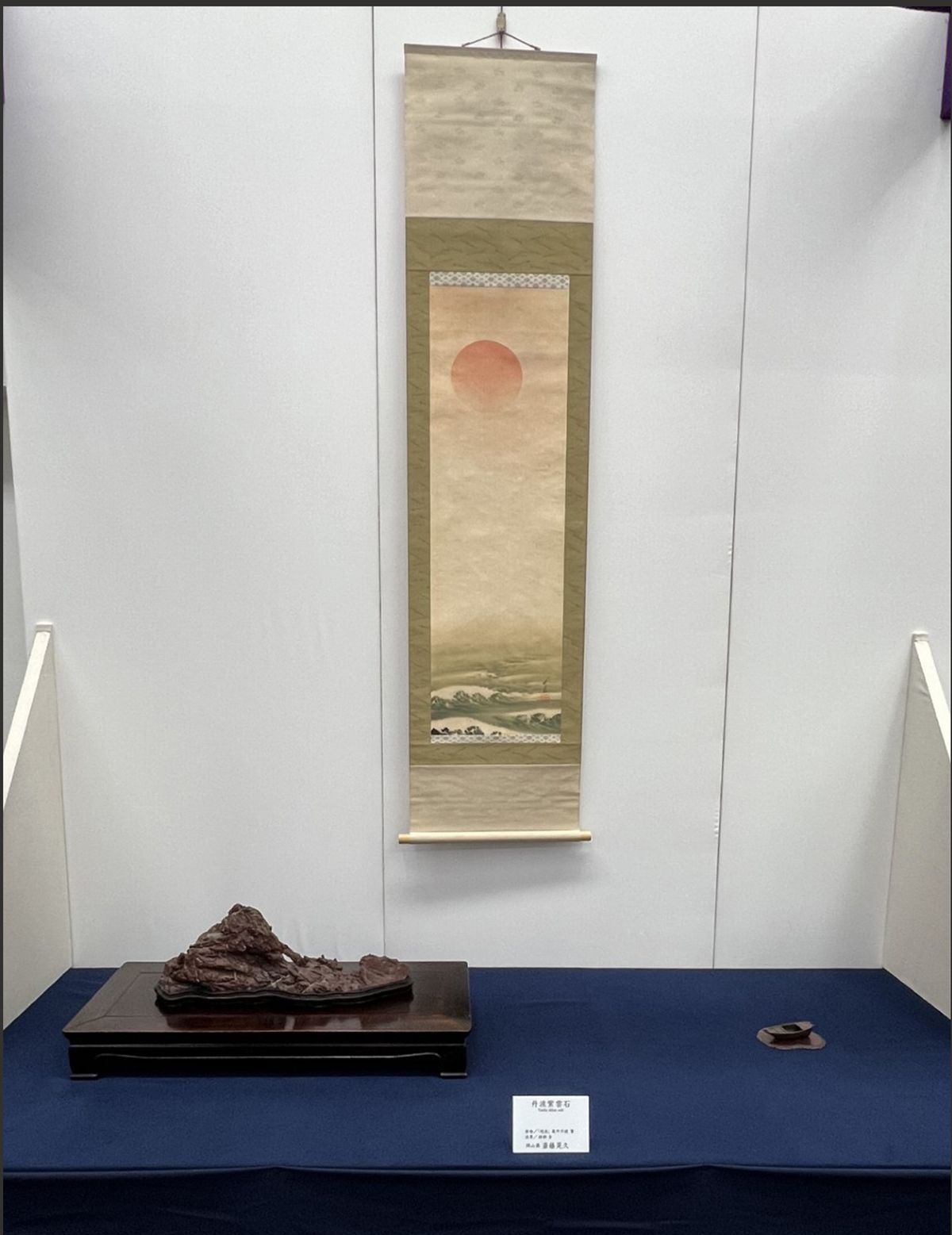
The two stones are similar in many ways. Both are approximately 22 inches long and 7 to 8 inches in height. They both are far mountain view stones with a gentle slope and valley. But each stone has its own features. The stones are matched with different scrolls that put the viewer in different moods and feelings for each stone. The kamuikotan stone suggests a quiet, subtle mountain far away. It has a smooth black colored skin and a gentle slope that runs down to the flat valley. In addition, the flower blossom scroll creates a calm and peaceful feeling for the whole display.
In contrast, this Tanba stone tokonoma display has the opposite features and effects. The reddish stone has a rough surface and sharp edges in the valley. Its accompanying scroll shows a rough sea under a red rising sun. In this display, the reddish mountain, warmed by the sun, gives the viewer a sense that this mountain and the valley are full of energy and activity.
I also noticed that due to its roughness and unique characters, this fine tanba stone will show more features if it’s being view at eye level. From this view, one can better see the stone’s bridge, sharp edge, and the elevation of the mountain. I wish that this stone could be placed on the taller wooden table.
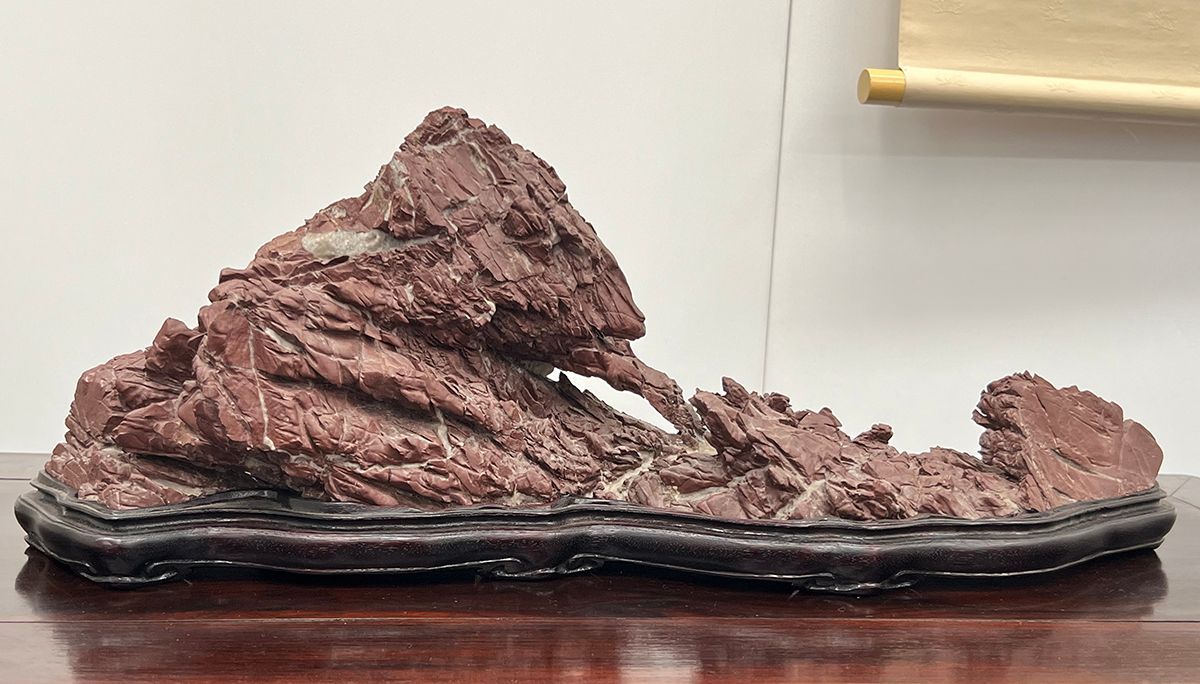
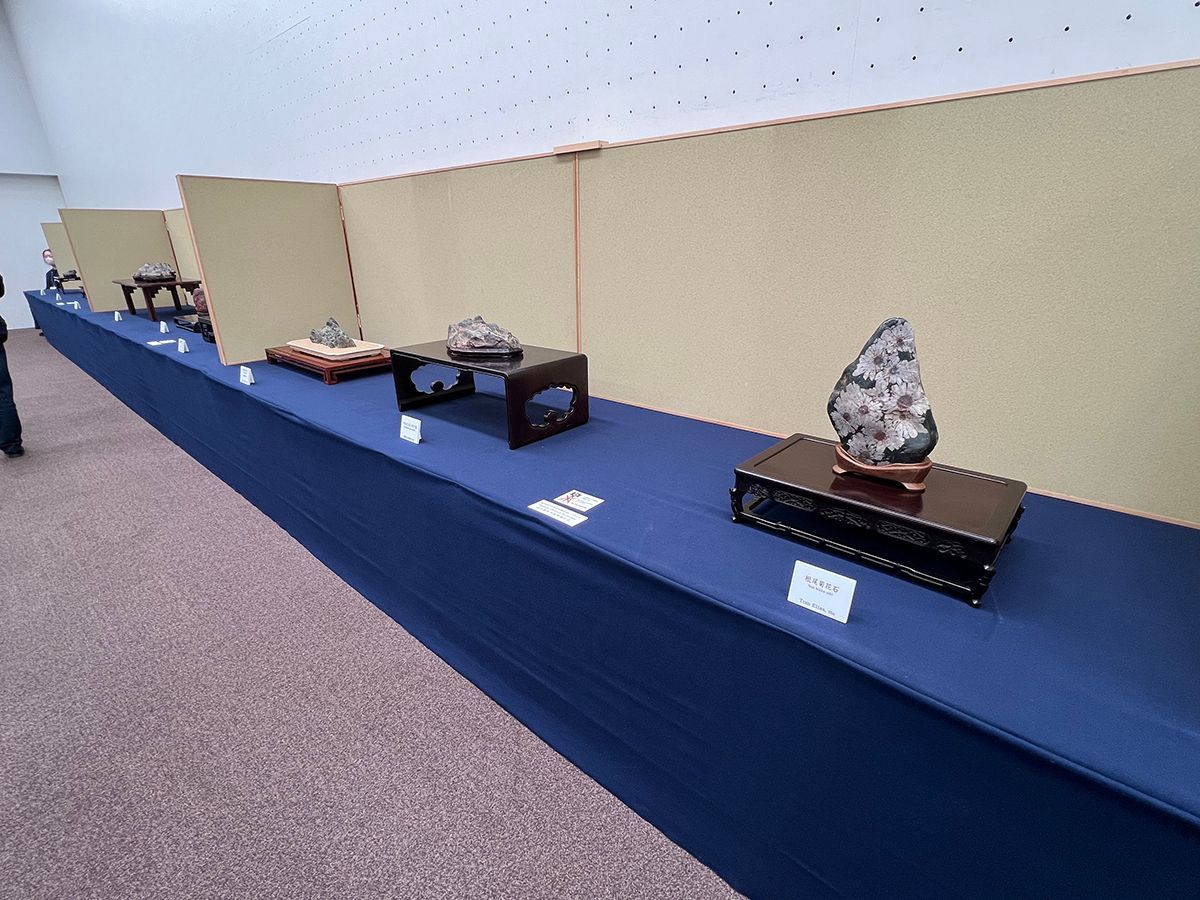
The General Exhibits are in the third room of the exhibition. Stones in this room are displayed in either a daiza or suiban and then placed on a wooden display table at the owner’s discretion. I slowly walked with delight while viewing the many nice figure stones and mountain stones that were on display in this room. Then I noticed two strange-looking stones. One was a yahikoyama stone whose lower part has a unique texture that I have never seen before. This stone has a shiny brown color at the base and gradually turns to a beige color on the top of the stone. Additionally the stone sits on a well-fitted textured wooden base that makes the whole display look unique.
The second strange stone that caught my eye was a kamuikotan stone. As noted earlier, this type of stone is hard, solid, and heavy and I wonder how has nature turned the stone into this shape?
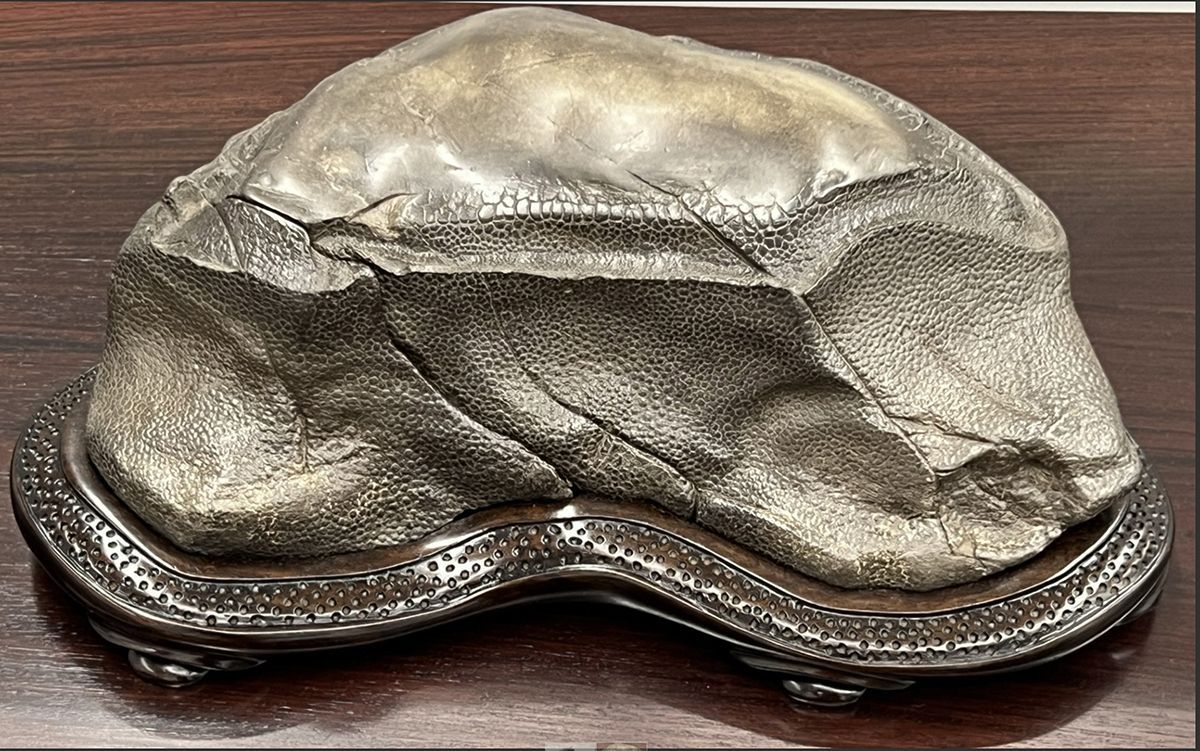
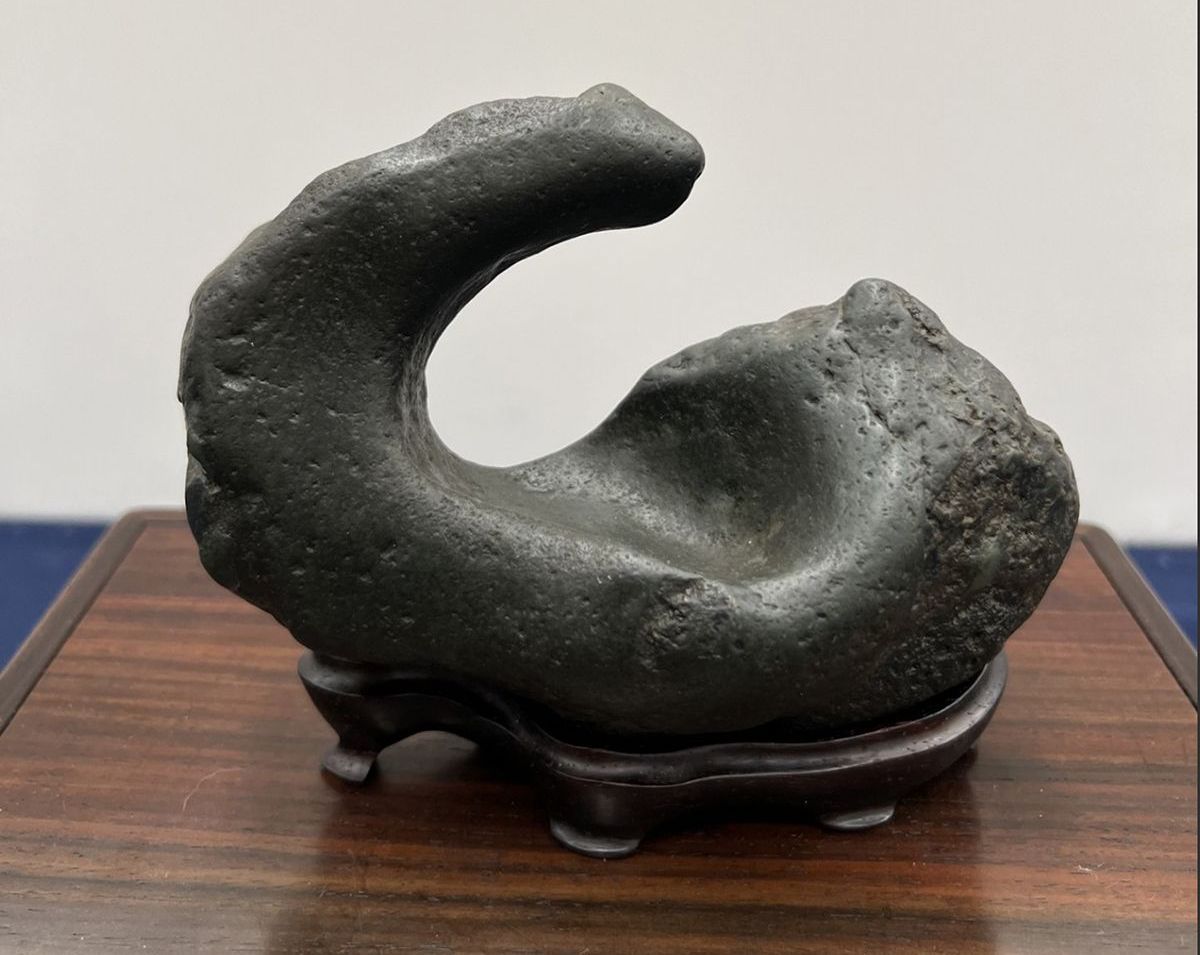
When I viewed this kamuikotan stone, I wondered how this stone would look if it was displayed in the same position in a suiban with water added to cover the lower part of the stone. Would you then see some kind of creature with its head and neck rising out of the water?
What does this stone suggest to you?
Does the stone suggest the famous Loch Ness Monster?
Collecting and displaying viewing stones is a fascinating hobby for me. I always wonder how nature has created the stone with such unique features. These stones were wonderful and I will never get tired of seeing these stones again and again. If I see this same stone in the future, I may see something different depending on my mood and imagination.

